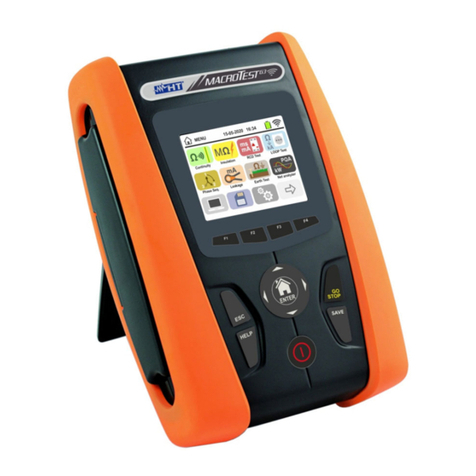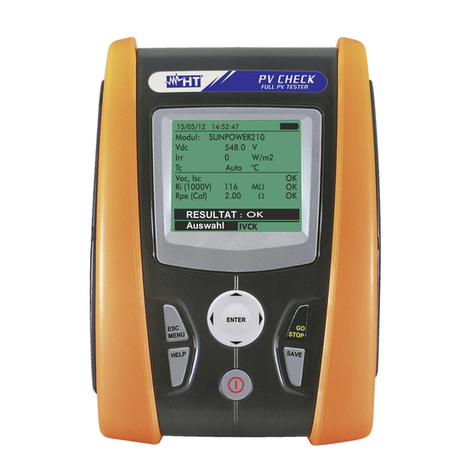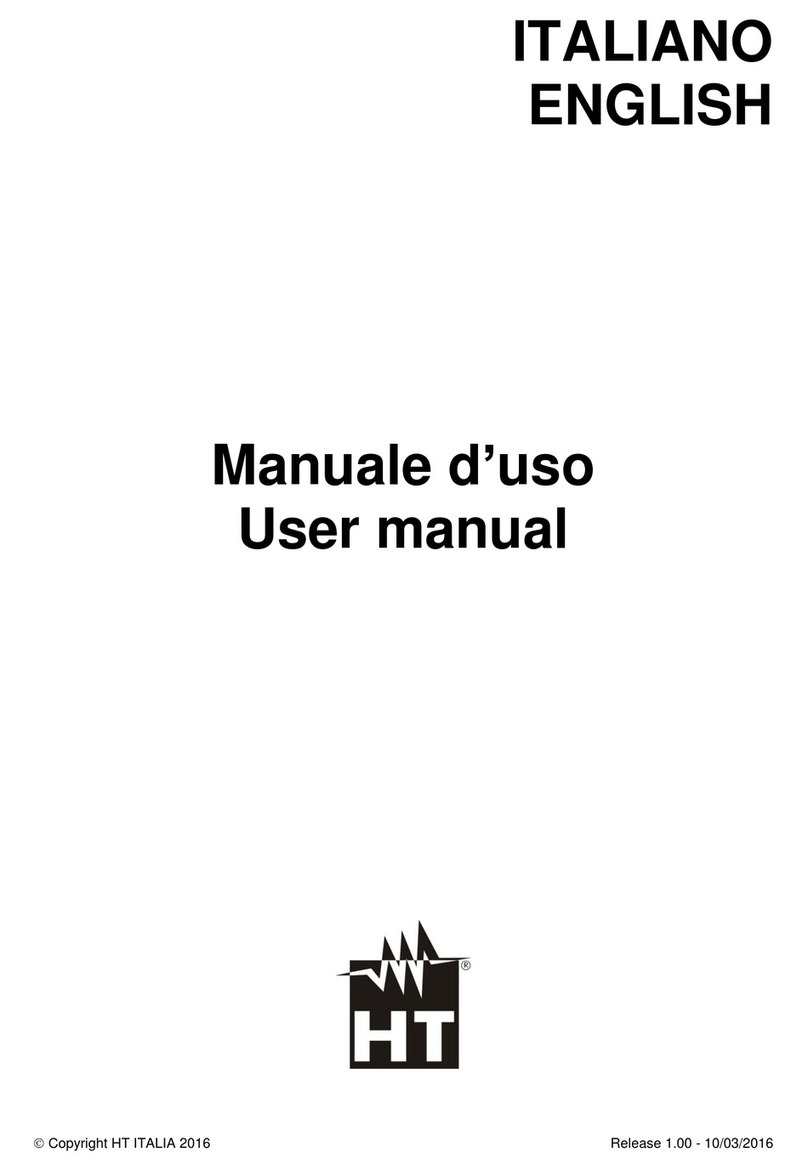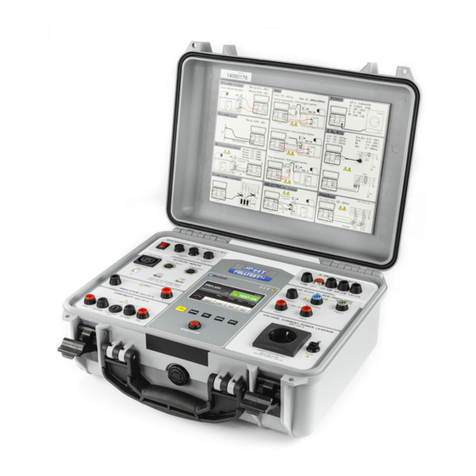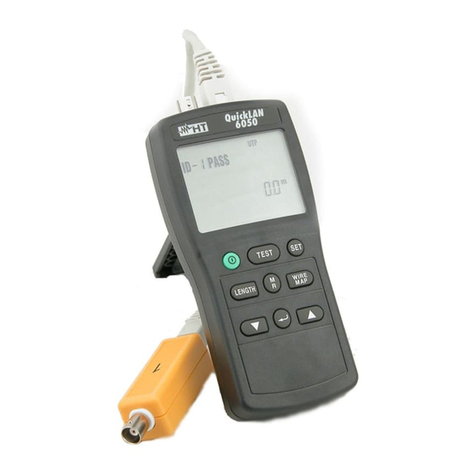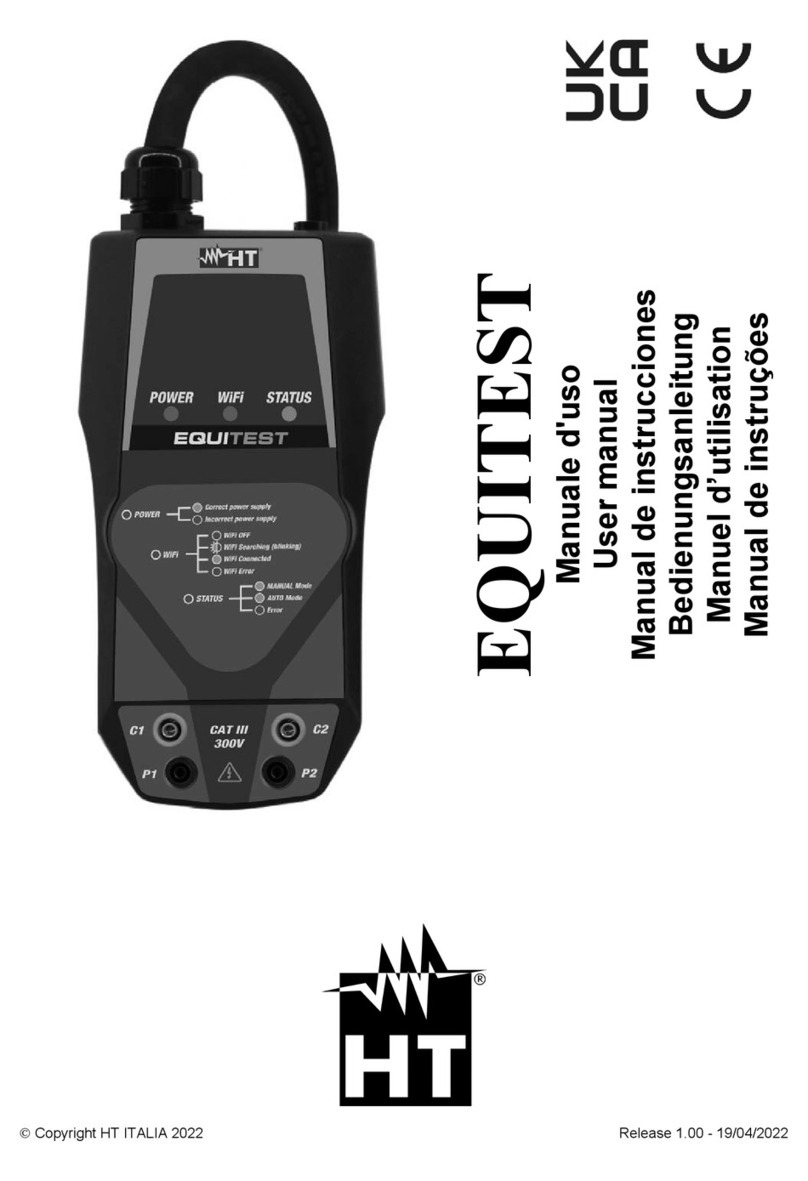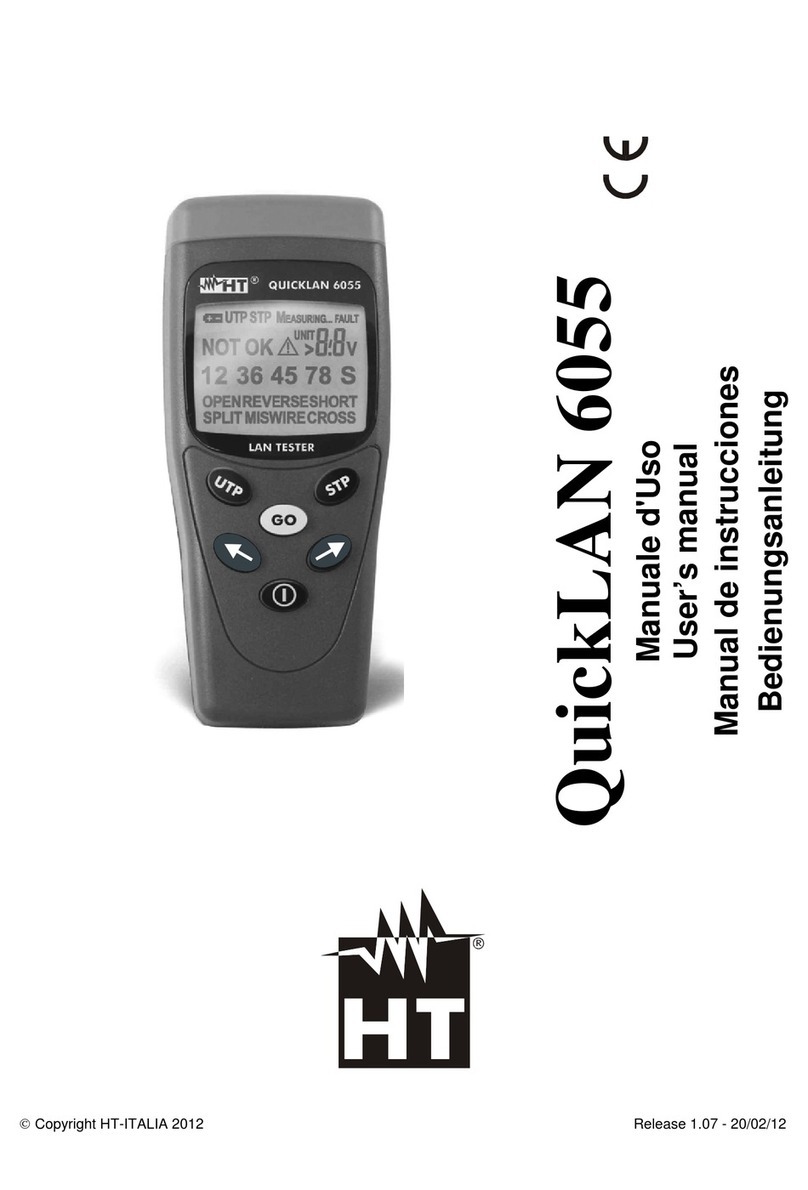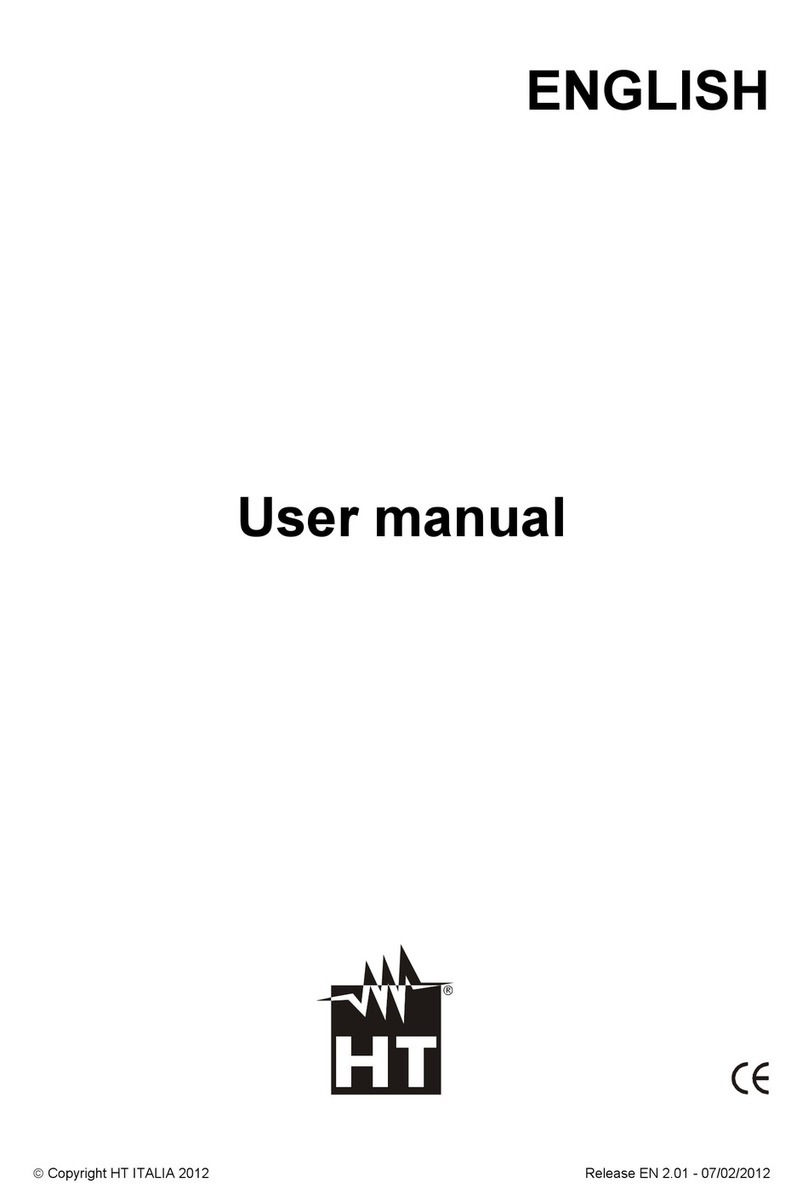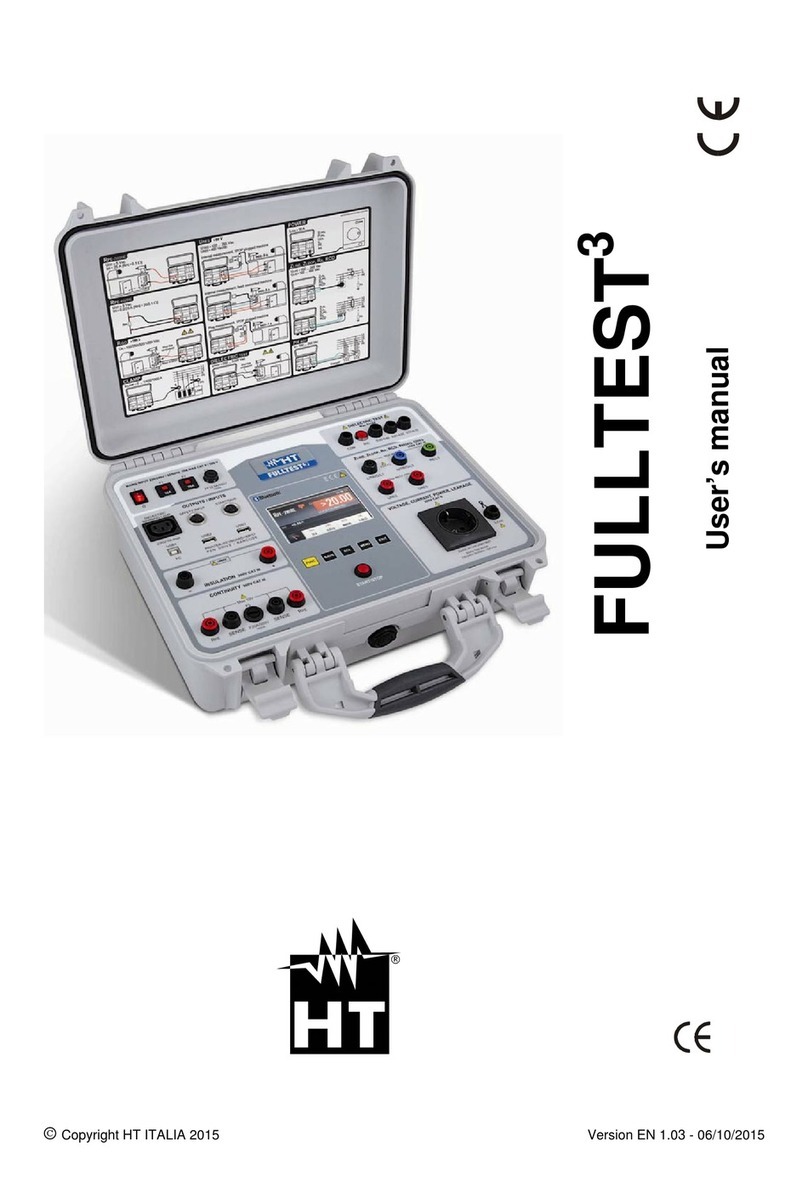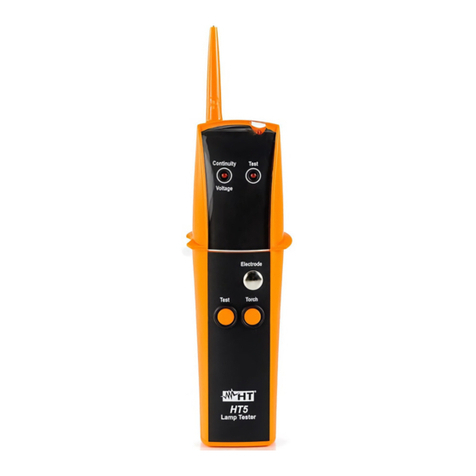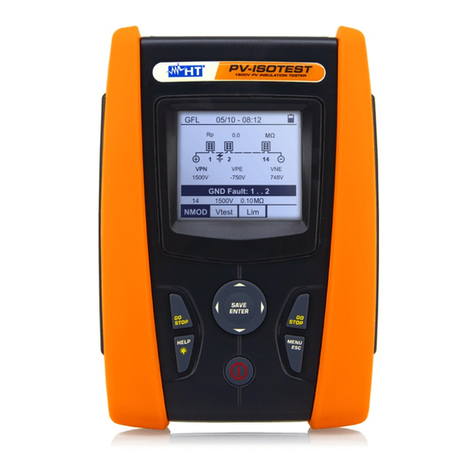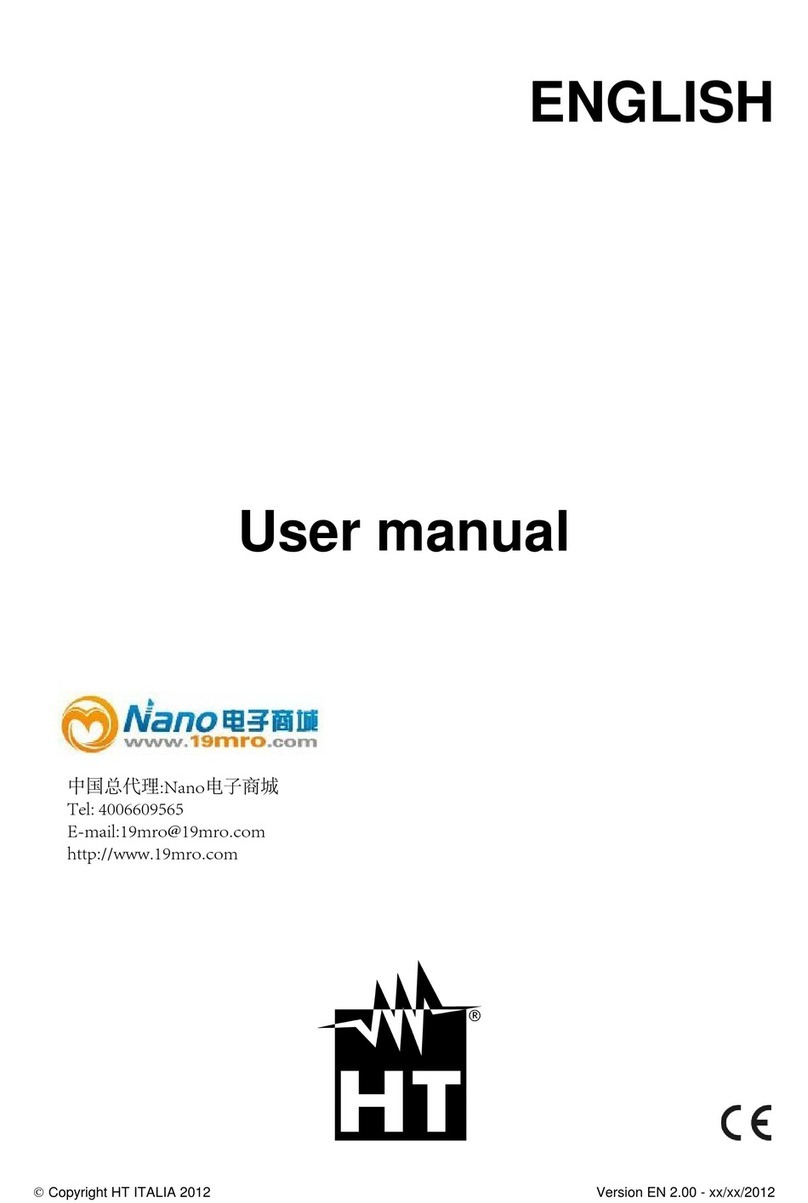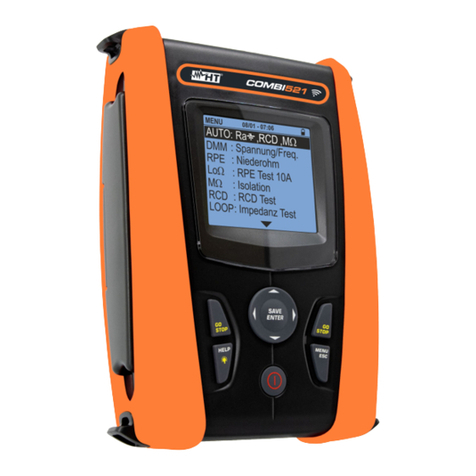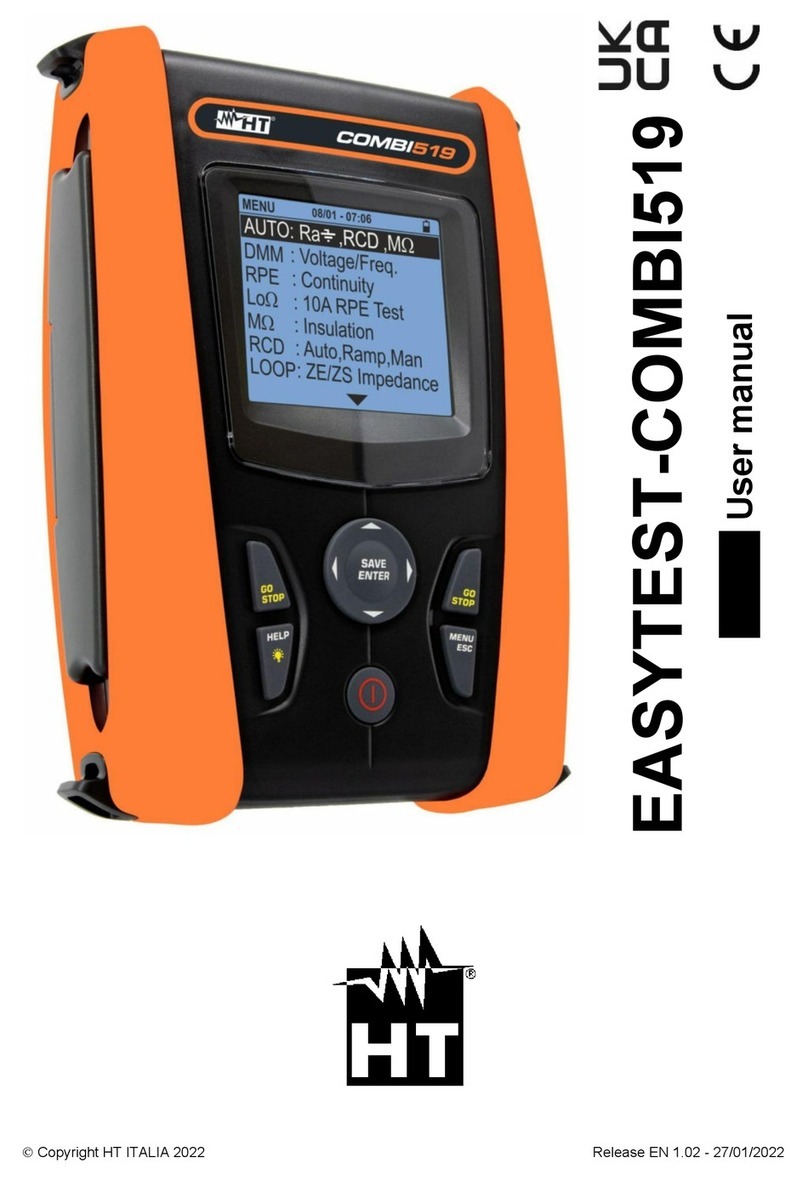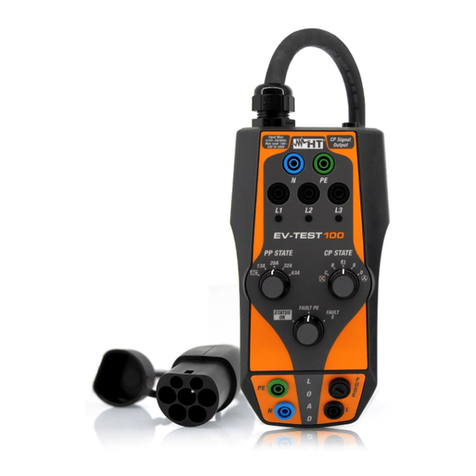
Rel. 3.00 - 03/10/228
EV-TEST 100
CONTROLLI INIZIALI
3.1
L’adattatore, prima di essere spedito, è stato controllato dal punto di vista
elettrico e meccanico. Sono state prese tutte le precauzioni possibili anché
L’adattatore potesse essere consegnato senza danni. Tuttavia, si consiglia
comunque di controllare sommariamente l’adattatore per accertare
eventuali danni subiti durante il trasporto. Se si dovessero riscontrare
anomalie contattare immediatamente lo spedizioniere. Si consiglia inoltre di
controllare che l’imballaggio contenga tutte le parti indicate al § 7.1.1. In caso
di discrepanze contattare il rivenditore. Qualora fosse necessario restituire
l’adattatore, si prega di seguire le istruzioni riportate al § 8
Utilizzare l’adattatore solo nei modi specicati nel presente manuale d’uso al
ne di evitare possibili danneggiamenti
ALIMENTAZIONE DELL’ADATTATORE
3.2
L’adattatore è alimentato direttamente dalla stazione di ricarica tramite
cavo a spina incorporato.
CONSERVAZIONE
3.3
Per garantire misure precise, dopo un lungo periodo di conservazione,
attendere che l’adattatore ritorni alle condizioni normali (vedere il § 7)
DESCRIZIONE
GENERALE
PREPARAZIONE
ALL'UTILIZZO
2
3
Il modello EV-TEST100 è un adattatore progettato per l’interfacciamento
con le prese delle stazioni di ricarica delle auto elettriche (sistemi EVSE –
Electrical Vehicle Supply Equipment) al ne di eseguire test di sicurezza
elettrica di tali dispositivi. L’adattatore è in grado di simulare la presenza
di un veicolo elettrico al ne di misurare i segnali di tensione in uscita dalle
stazioni di ricarica e simulare condizioni di guasto. EV-TEST100 è utilizzabile
in abbinamento ai seguenti strumenti di verica della famiglia HT:
L’adattatore è caratterizzato dalle seguenti funzioni:
• Utilizzo per stazioni EVSE con modi di ricarica 2 e 3
• Cavo di prova con connettori di Tipo 1 (nazioni USA/MEX/JAP) e Tipo 2 (nazioni EU)
• Simulazione veicolo tramite Control Pilot (CP state)
• Simulazione capacità corrente cavo tramite Proximity Pilot (PP state)
• Simulazione condizione di guasto su PE (Fault PE)
• Simulazione condizione di guasto sul Control Pilot (Fault E)
• Controllo ecienza contatore energia interno stazione (sezione LOAD)
• Indicazioni a LED presenza fasi del sistema
• Terminali per collegamento a strumenti di verica HT
• Fusibile di protezione sulla sezione LOAD
• Test in accordo alle normative di riferimento IEC/EN61851-1 e IEC/EN60364-7-722
Modello (*) Tipologia
costruttiva Alimentazione EVSE Versione FW
MACROEVTEST
CAT IV 300V
Monofase
L-N-PE
Trifase
L1-L2-L3-N-PE
2.08
(o superiore)
COMBIG2
COMBIG3
COMBIG2PLUS
COMBITEST425EV
MT-300
COMBI521
SUPERCOMBIS
Monofase L-N-PE
Bifase L1-L2-PE
Trifase L1-L2-L3-N-PE
2.09
(o superiore)
ATTENZIONE
(*) L’elenco dei modelli disponibili può
variare senza preavviso. In caso di dubbi
contattare il servizio assistenza
Tabella 1: Elenco modelli compatibili con
adattatore EV-TEST100












